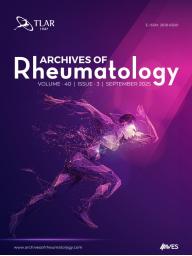Treatment of Systemic Sclerosis-Associated Interstitial Lung Disease: A Systematic Review and Network Meta-Analysis
Main Article Content
Abstract
Background/Aims: Several clinical studies have shown favorable outcomes in treating systemic sclerosis-associated interstitial lung disease (SSc-ILD), yet head-to-head comparisons regarding the efficacy and safety of these pharmacological therapies remain limited.
Materials and Methods: A systematical search was conducted to identify randomized controlled trials (RCTs) on pharmacological treatments for SScILD.A comprehensive systematic search was performed across Cochrane Library, Embase, PubMed, and Web of Science to identify RCTs that evaluated pharmacological interventions for SSc-ILD, specifically cyclophosphamide, mycophenolate mofetil, nintedanib, pirfenidone, tocilizumab, and rituximab. The effects of various treatments versus placebo on changes in forced vital capacity (FVC), diffusing capacity of the lungs for carbon monoxide (DLCO), and serious adverse events (SAEs) were evaluated by a Bayesian network meta-analysis. Pooled estimates, including mean difference and risk ratios with 95% CIs, were calculated to compare different therapies. The surface under the cumulative ranking probability (SUCRA) was then used to rank these therapeutic agents.
Results: Tocilizumab had the highest SUCRA probability (90.4%) in slowing the deterioration of FVC. Rituximab showed the highest SUCRA probability (84.2%) in the prevention of DLCO. Moreover, rituximab showed the lowest probability (59.1%) for SAEs.
Conclusion: Tocilizumab and rituximab may be the optimal interventions. Still, further direct head-to-head trials are necessary to substantiate these conclusions.


